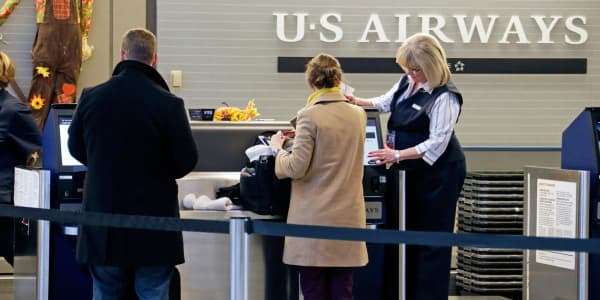It has the fastest Internet speeds in the Western Hemisphere. It boasts the world's only automotive factory with LEED Platinum certification, the EPA's highest green-building rating. And Outside magazine named it "The Best City Ever."
A Silicon Valley enclave?
No. Chattanooga, Tenn., the factory town once so polluted that people had to drive with their headlights on all day. Chattanoogans are quick to mention that in 1969 Walter Cronkite called it the "dirtiest city in America."
They're also quick to add that their town is now called Gig City, after making a big comeback. The nickname comes from its fiber-optic network, the nation's first to support Internet speeds of one gigabit a second, which is probably more than 100 times faster than the connection you're using to read this now. Chattanooga's gig network has helped attract $4 billion in foreign investment since the downturn and a flock of new tech entrepreneurs to the city, who revel in its green spaces, hip cultural offerings—and clean air.
(Read more: Cheapest States to Live)
"I enjoy it here because of the entrepreneurial spirit," said Bobbi Rakova, co-founder of HutGrip, a young software start-up that optimizes manufacturing production processes by collecting and analyzing data. The functionality of its products relies on the gig network.
Rakova and her business partner had been working on the concept in their native Bulgaria in early 2013 when they heard about a business accelerator program in Chattanooga, traveled to the city to participate and decided to stay. One of their clients is Chattanooga Bakery, which has been making Moon Pies since they invented them in 1917.
"We have a lot of opportunities to work with local companies who are willing to try new things," said Rakova, who's also enthusiastic about Chattanooga's lifestyle. "I've never been able to bike to work before!"
"We certainly work hard on our quality of life," said Andy Berke, Chattanooga's mayor. "Businesses are looking for ways to tap into existing infrastructure, and the web is part of that. But they also want to know there are logistical opportunities, that the city leadership is forward-thinking and committed and that we will provide a great place for their workers."
(Read more:America's Cities on the Edge)
Reinvention on the riverfront
Like many other broken American cities, Chattanooga struggled to recover after it was ravaged by industrial decline in the '60s and '70s. It began by addressing its air quality. Then it launched a revamp of its riverfront, which now offers outdoor recreation and a world-class aquarium. In the '90s the city began revitalizing downtown. By 2000 a Brookings Institution study concluded Chattanooga had made a turnaround, posting increases in wages and median household income and modest population gains. (It now has more than 170,000 residents, making it Tennessee's fourth most populous city.)
Many jobs had disappeared as manufacturing continued its decline in the post-industrial era, and they weren't coming back. But things continued looking up for Chattanooga—until the recession hit. Though the city weathered the recession better than some, the decline in its economic output was double that of the country's.
City leaders, armed with tax incentives and land grants, got busy trying to woo manufacturing back. In 2010 turbine maker Alstom opened a plant, funded in part by a $63 million clean-energy credit from the U.S. Department of Energy. The next year, Volkswagen completed a $1 billion factory credited with creating 12,000 jobs. Amazon, too, was among a slew of receptive companies, opening a fulfillment center in 2011. Two years later President Obama made a stop at the facility on his national tour promoting middle-class jobs.
Meanwhile, the city-owned EPB (formerly Electric Power Board), aided by a $111 million stimulus grant, had begun building a fiber-optic network—which sends data as pulses of light rather than signals over cable—to accommodate a smart grid that would digitally monitor metering and automate switches and reduce the impact of outages. The grid is delivering benefits. Its first big test came in July 2012, when a violent windstorm ripped through the area. Fewer outages and expedited repairs saved the city $1.4 million.
Smart about the smart grid
Things got more interesting when Chattanooga realized it could use the speed-of-light network to offer Internet on steroids; in 2010 it rolled out its gig network to more than 150,000 homes and businesses in a 600-square-mile area—years before Google took its first steps toward implementing its own gig network in three cities.
Recognizing the value of their asset, city leaders have put out a welcome mat for techies and future-oriented thinkers and businesses through efforts to increase awareness of their gig network nationally and globally, participate in entrepreneurial development programs and encourage a culture of change. The result? They've sparked an entrepreneurial boom.
The gig network also got the attention of US Ignite, an initiative that grew out of a White House roundtable discussion, which aims to cultivate next-generation Internet applications benefiting communities. Calling Chattanooga a pioneer, it's helping the city generate innovation and serve as a model for other cities.
Also fostering innovation is Gig Tank, the business accelerator that has nurtured 15 start-ups, including HutGrip, which secured several clients in industries, including printing, packaging and food production just a few months after pitching its business. "It's drawn dozens of way-smarter-than-me people from all over the world to think about how this infrastructure can be leveraged," said Sheldon Grizzle, founder and co-director of the Company Lab, a nonprofit that assists fledgling entrepreneurs. It has hosted two Gig Tanks and is planning a third.
Innovation is definitely happening. Variable Ink produces NODE, a multifaceted remote sensor for smartphones that made a splash at the 2013 Consumer Electronics Show. It was invented by former NASA scientist and Chattanooga resident George Yu. Said Grizzle: "George told me that access to the high-speed network allows his team to be more efficient. Just simple things, like updating codes that might have taken all night, now take six minutes. That's a real efficiency gain."
Navigating the road ahead
We need a mix of jobs. And we understand that in advanced manufacturing today, technology plays a role.Andy BerkeMayor of Chattanooga

Not everyone is gung-ho about the route Chattanooga is taking. Some complain that tax incentives for large companies are unfair and detrimental to local businesses, others that jobs at big manufacturers like Amazon don't pay enough. Some think the gig network and the influx of tech bypasses the needs of many Chattanoogans.
"We don't see this as an either-or situation," said Mayor Berke, who acknowledges the city has challenges to meet, including education, but believes tech and manufacturing efforts are working in tandem to forge a path to the future. "We need a mix of jobs. And we understand that in advanced manufacturing today, technology plays a role." The city's Chamber of Commerce said 1,000 new jobs have been created since Berke took office in April 2013.
Since 2010 Chattanooga has gained 7,700 jobs, according to a September 2013 CareerBuilder study. But like most metropolitan areas, it has yet to recoup all the jobs it lost in the recession. Unemployment is up a bit from last year after layoffs by several companies, including Volkswagen and Alstom, and at 8 percent remains higher than the national average.
Still, economic output has rebounded, and in September 2013 the Brookings Institution ranked Chattanooga's growth pace among the top third of large U.S. cities. Its innovative approach to diversifying its economy, adopting future-oriented strategies and making the city attractive to young talent is one that Berke believes other cities can emulate. "We're in better shape today than we have been in a long time, and we're poised for growth," he pointed out. "We hear from several cities a month wanting to know what we're doing down here to generate economic activity."
Grizzle recalled that when he first came to Chattanooga for college, "It wasn't conducive to the kind of hopes and dreams and opportunities for young, talented people who could go anywhere. But there's been enormous progress over the last five years." Now he feels good about raising his kids in Chattanooga. "I know the city is serious about remaining competitive in a world that's changing so fast."
—By Robin Micheli, Special to CNBC.com




